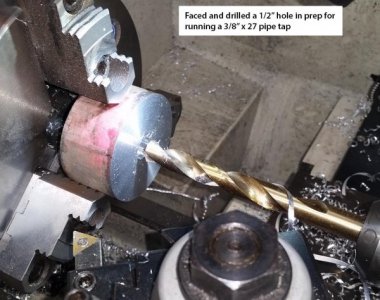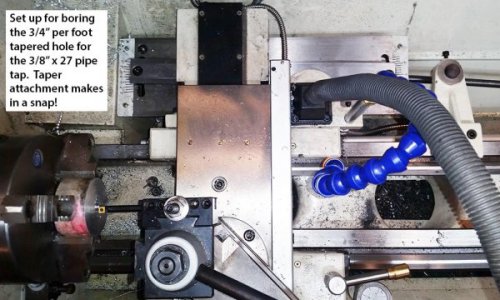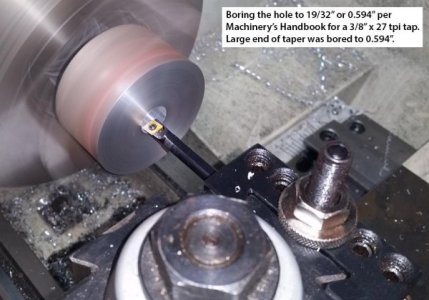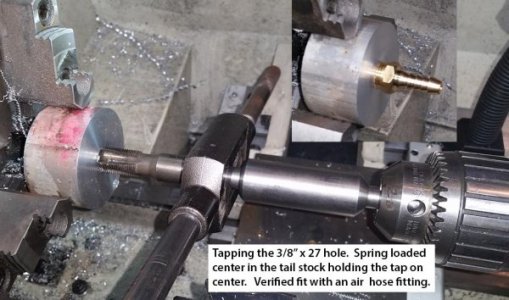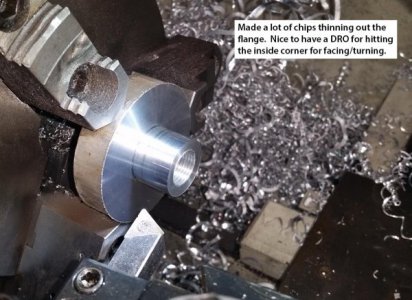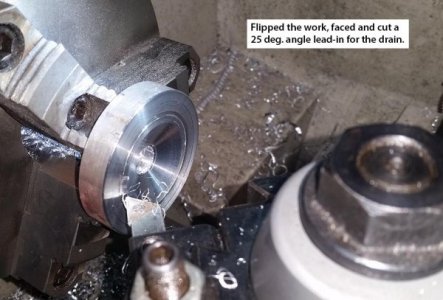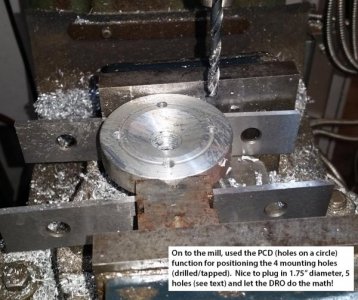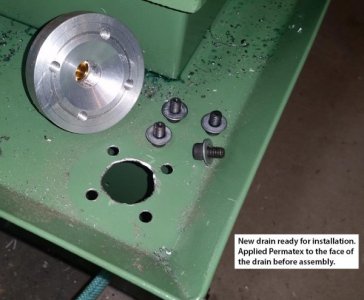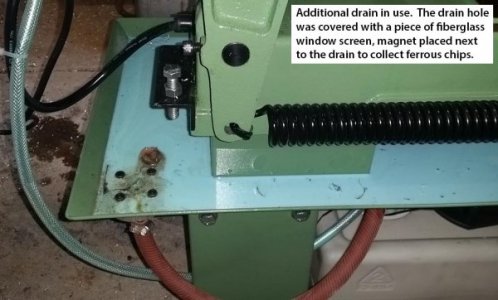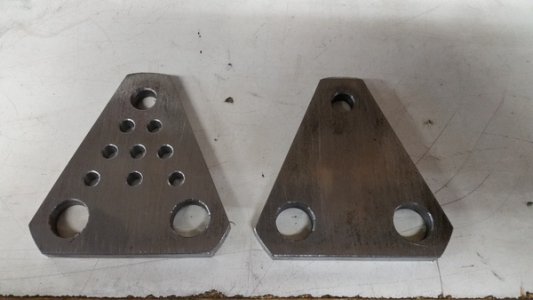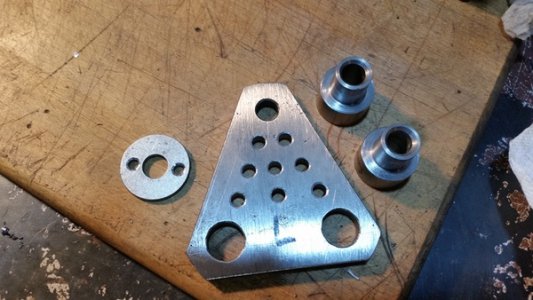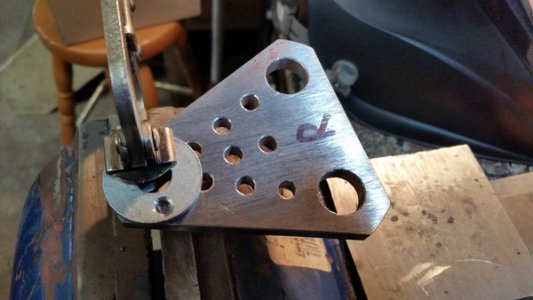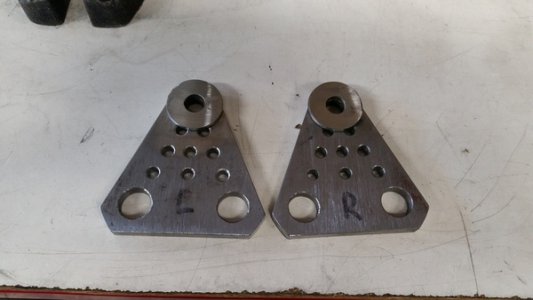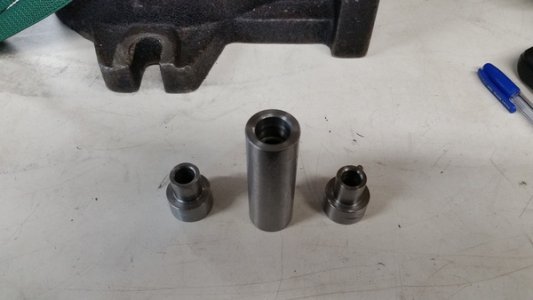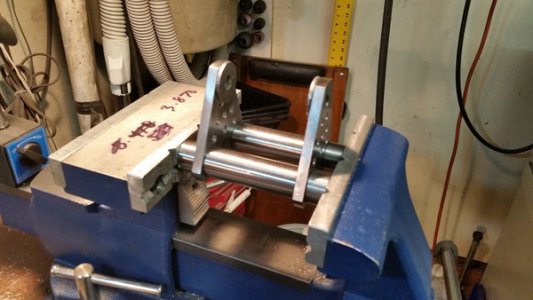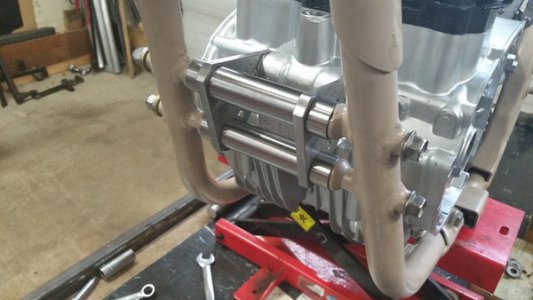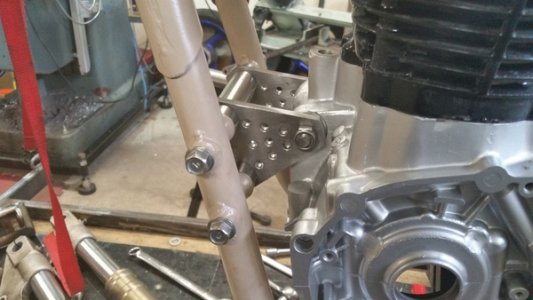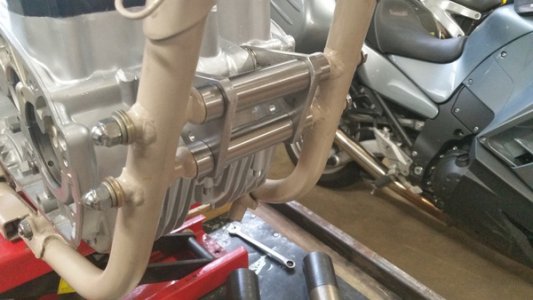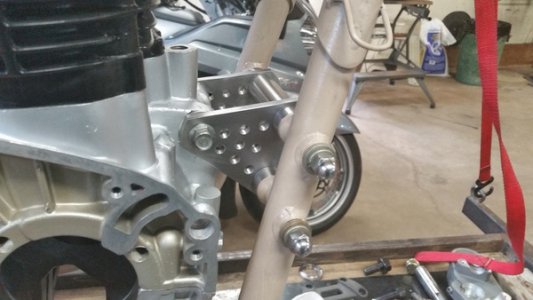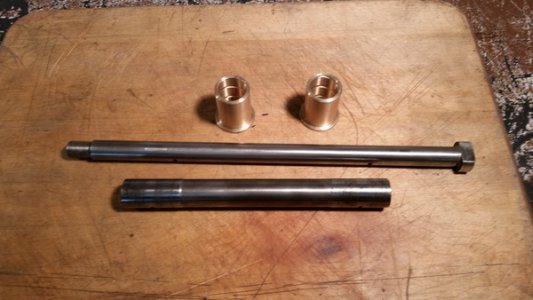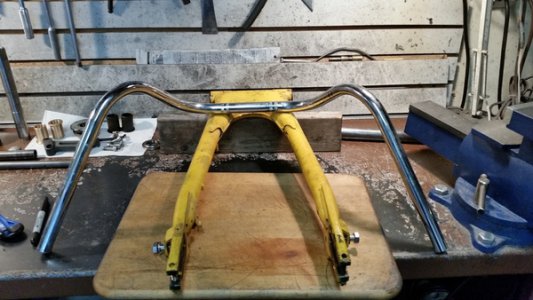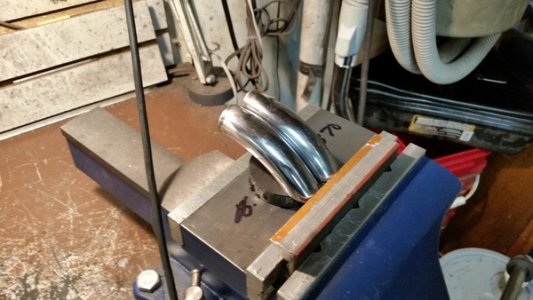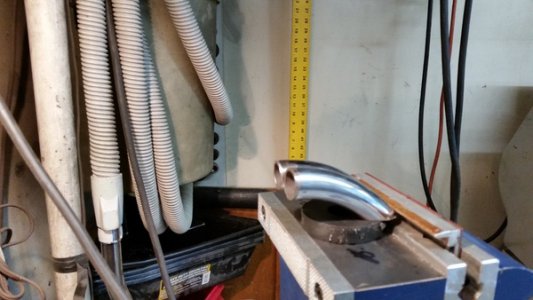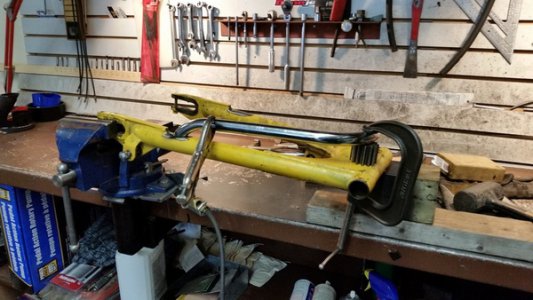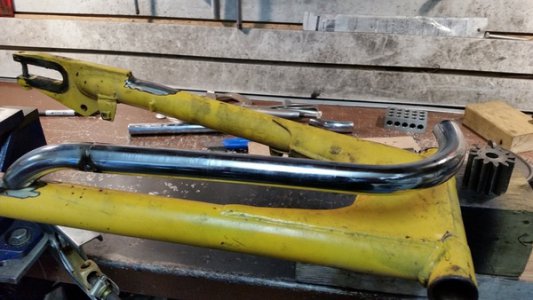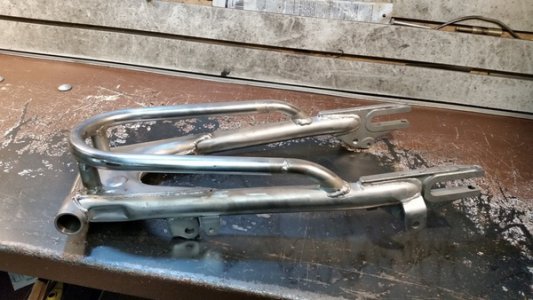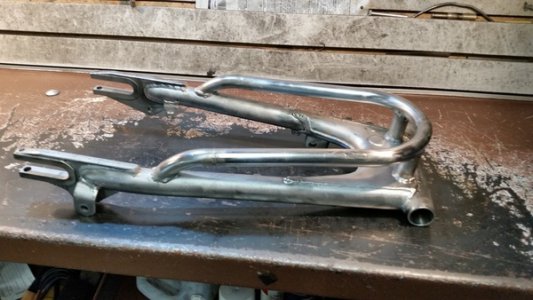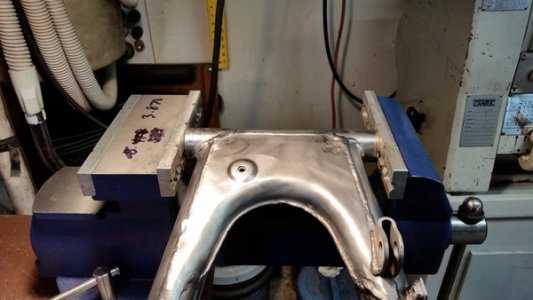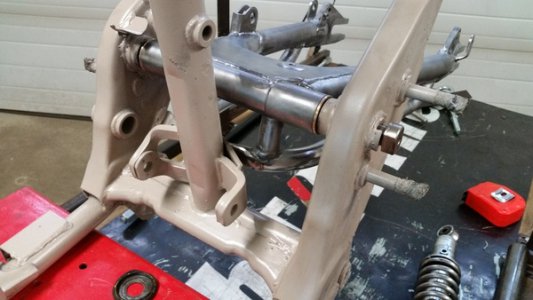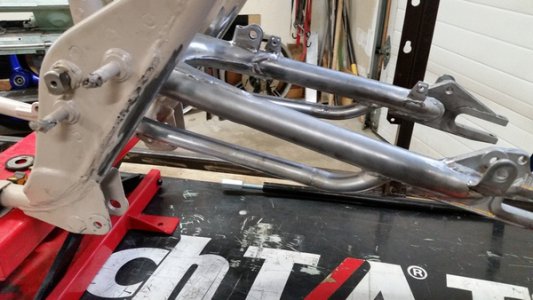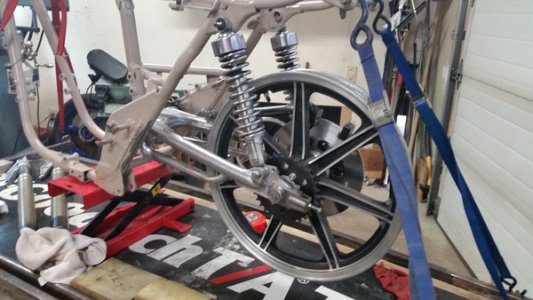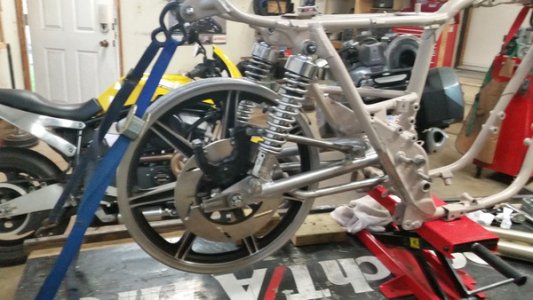Yesterday’s POTD. Really like my Harbor Freight 7” x 12” band saw. However, the chip pan is as flat as the work day is long so coolant doesn’t want to drain very well. My solution was to add an additional drain in the back corner and run a second hose to the pump reservoir.
The new drain housing was made from a chunk of 2 ½” aluminum. Fitting to the additional drain hose was an air hose nipple. Working end has a 3/8” x 27 tpi pipe thread.
Machinery’s Handbook calls out a 19/32” tap hole and suggests running a ¾” over 1 foot ream through the hole. I have a 3/8” x 27 pipe tap, but don’t have the 19/32” drill or the ¾” per 1 foot ream. Hey, how about boring the tap hole and cut the taper with my G0709 lathe that has a taper attachment! I know I spent around $400 for the taper attachment for some reason!
The 2 ½” round was faced and a ½” pilot hole drilled. Taper attachment set to ¾” per foot taper and the large end of the tapered hole was bored to 0.594” (19/32”). Tapped the hole on the lathe using a spring-loaded center in the center drilled end of the tap to hold it on line.
Brought the work out of the chuck some to relieve material around the tapped hole. I’ve seen a number of threads on turning shoulders; do you turn the OD and then face for a crisp inside corner? My G0709 has a DRO on it also, makes it really easy to get a nice shoulder.
Flipped the drain housing and faced the opposite side. Plan was to attach the drain to the band saw with four ¼” x 20 cap screws on a 1 ¾” circle. Tool bit was “dipped” to the work and the resulting ring diameter measured with calipers. The X axis on the DRO got that number plugged in, then adjusted cross feed to 1.75” diameter and made a second plunge. Not a necessary step but it gave me a layout line of sorts for the mounting bolt holes. Also was a good visual aid for cutting a 25 deg. lead in on the drain face, kept advancing the cut until I got close to the bolt circle.
On to the mill, used the mill’s DRO to do the four holes using the PCD function (holes on a circle). My DRO is typically zero’d out in ABSolute mode on the left corner of the fixed vise jaw. Set the drain in place with the LH edge in line with that jaw, so 1.25” on the X and Y put me at the center of the hole. The PCD function asks for the hole center, hole diameter, number of holes, starting and ending angles. I was at center so that was easy (0, 0). Hole diameter was 1.75”. Number of holes; 5. Why five? I input a start angle of 0 degrees and an end angle of 360 degrees. The DRO interprets the steps as 0, 90, 180, 270 and 360 or 5 steps around the 0 to 360 circle. I could have put in 4 holes and run them through angles of 0 to 270 (steps would be 0, 90, 180, 270), but frankly it’s easier for me to do a full 0 to 360 and add one to the number of holes. Center drilled, tap drilled and tapped the ¼” x 20 holes.
Now on to the band saw. The new additional drain is at the rear corner of the saw. Laid out those holes and drilled through the pan. Mounted the new drain with the cap screws and a couple of layers of fiberglass mesh to filter the drain hole. A film of Permatex was applied to the face of the drain before attaching to the band saw. Ran a short length of air hose from the drain nipple to the pump reservoir. Additional hose is tie strapped to the existing drain hose to hold it in position. I put a rare earth magnet next to the drain also to collect ferrous chips. The saw is now leveled with the rear corner low.
The new drain works great, no risk of running the pump out of coolant, no puddles of coolant setting in the pan for days after cutting. I’m going to replace the drain hose with a more flexible hose in the future, the air hose I used is really stiff and tends to want to set higher than I’d like though it shouldn’t affect how well it drains.
Bruce
